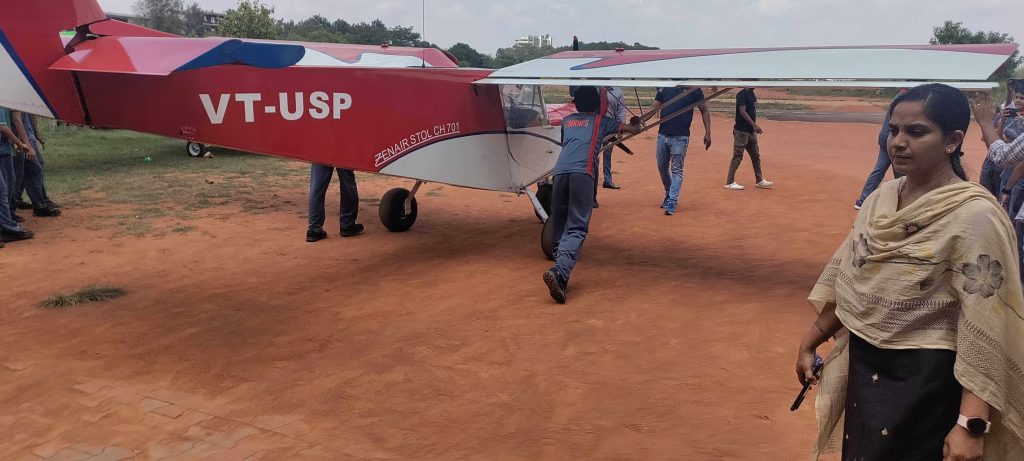The endless sky has always been an aspect that humans want to explore. For centuries to come, humans have tried countless ways to reach the sky. This journey has had its ups and downs- just like an aircraft! But how far we’ve arrived is simply mesmerizing! They say the sky’s the limit, but planes have proved otherwise. The first aeroplane was created in 1903, flew for only 12 seconds, and scaled up only 120 feet. Presently, we have aircraft that reach heights of 30,000-40,000 feet. This is why it’s rightly said: “Aviation is proof that given the will, we can achieve the impossible.”
On 16th August, grade 9 went to Jakkur Aerodrome. It was an out-of-the-world experience!
The Agni Aero Sports Adventure Academy was founded in 1994 by Captain Arvind Sharma.
This company manufactures aircraft and conducts pilot as well as engineer training. The X/air and Zenair are some well-known aircraft they manufacture.
Jakkur aerodrome is a vast area. We were introduced to different brands of aircraft, namely the Zenair STOL CH 701, Cessna 340 and 180 and X/air. The basic Bernoulli principle behind an aeroplane flight was taught to us, along with the classification and the various parts of a plane. The four prime forces acting on an aircraft that help it fly, the LIFT, WEIGHT, THRUST and DRAG, were introduced to us.
We were taught that an aircraft could be classified into three categories: the placement of wings (High wing, mid-wing and low wing), the weight (microlight, light and heavy) and last but not least, their purpose. The primary goals of an aircraft are for aeronautics, military, recreation and cargo.
The main objective of our wonderful trip was to learn what an aerodrome is and to gain a brief but significant understanding of the fundamentals of aviation. Also, we learned about the work that Agni Aero Sports undertakes and how crucial it is to various aircraft manufacturers.
In addition to the basics of classifying an aircraft, we were further taken into their structure: the parts of an aeroplane. That included propellers, landing gears, the central cockpit and the empennage. Also, the operation and significance of each of these components were explained to us.
Sitting inside the cockpit and experiencing what a real pilot may feel on an aircraft was interesting. Having the privilege to handle the controls in the cockpit and move the elevators on the horizontal stabilizers of the plane was an extraordinary experience like no other! It was as if we were the pilots, and the aircraft was in our control.
We also got the chance to see the interior engine of the aircraft and how exactly it functions to allow the propellers to rotate, increasing the thrust.
We were also taken into the store area, where we explained the need for an inventory management system. We saw how the raw materials used in the aircraft’s manufacture were neatly organized and labelled. It was
Overall, this educational tour increased our comprehension of aviation and aircraft operations. More than half of the students and classmates who went on the trip with us had always been curious about how an aeroplane operates and takes off. But since we have reached a point of maturity where we can comprehend how it works, Agni aircraft has dramatically influenced how we think about physics and the idea of flight.
Punam Shenvi
IX-D

